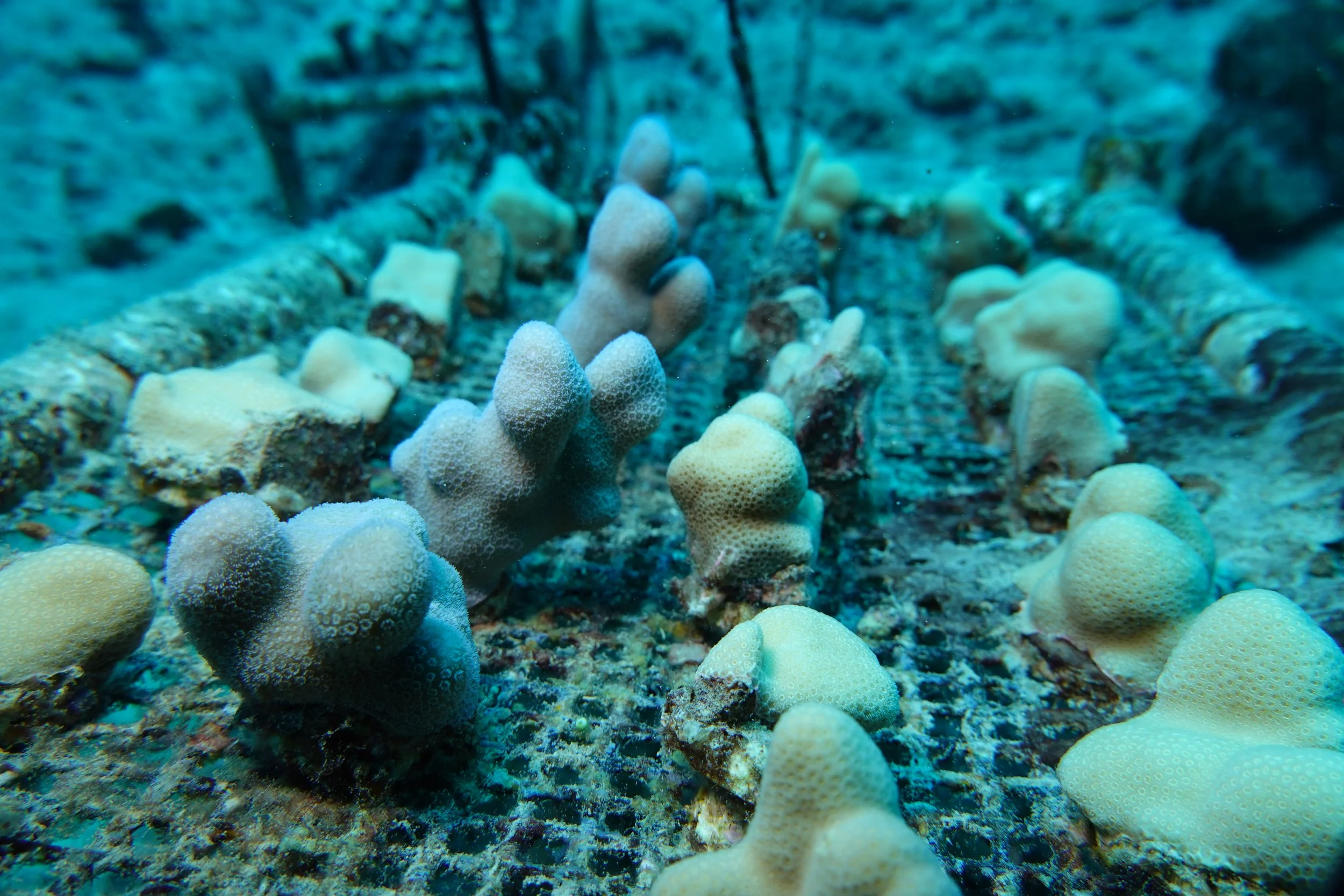
Restoration Methods
Restoration Techniques
The reefs of Hawaiʻi are unlike many reef ecosystems in the world, characterized by extremely slow growth rates and year-round exposure to open ocean swells and intense wave action. These features create challenges when using traditional restoration techniques like fragmentation and outplanting from land-based nurseries.
Our unique environment requires a unique restoration strategy for scalable reef recovery.
Our coral species average 2 cm of growth per year compared to ~15 cm in other tropical regions.
Slow Growth Rate
Intense, year-round wave action batters Hawai’i reefs, with 20+ foot swells.
Open Ocean Swells
Strategies
-
Large Rescued Colonies
By reattaching large, dislodged corals of opportunity, colonies will immediately return ecological services back to the reef, representing decades of coral growth.

-
Fragmentation
By cutting corals of opportunity into smaller fragments, we can stimulate faster growth and outplant back onto the reef using different types of module substrates.
-
Coral Caching
By using existing coral colonies and keeping the coral in the ocean throughout the process, we avoid the risks, expenses and time of a land-based nursery.

-
Emergency Response
Our dive team can help recover coral reefs after extreme weather, ship groundings, and coastal damage that dislodges colonies and threatens reef health.

Restoration Toolkit
While we offer a number of interventions to save coral, our team will only consider restoration after local community consultation and approval. We then tailor our restoration strategy based on the moʻolelo (stories) of the area and priorities of the community.
These four restoration priorities inform a place-based strategy and plan.

Our techniques and approach synchronize to create an innovative and scalable restoration concept designed by our team in Hawaiʻi, for Hawaiʻi.
Community-Based Coral Restoration Area (CBCRAs)
CBCRAs are defined by a mauka (upstream) community partner that informs our strategy, and connects our restoration work to theirs to bolster the health of the entire ahupuaʻa. CBCRAs can include many restoration sites and partners, but are built from the traditional knowledge of the place and strengthened through community involvement and agency.
A successful CBCRA builds resilience in both the coastal community and ecosystem.






